 HILLSBOROUGH
COUNTY HIGH SCHOOL'S SECOND HOME HILLSBOROUGH
COUNTY HIGH SCHOOL'S SECOND HOME |
|
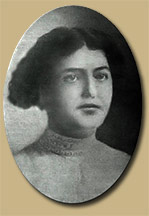 In
1885, the School Board sold the school property
on
the 500 block of Franklin St. to
Sparkman and Sparkman (which in 1911 was known In
1885, the School Board sold the school property
on
the 500 block of Franklin St. to
Sparkman and Sparkman (which in 1911 was known
At the
beginning of the term in 1886, the High School and Tampa
School No. 1 moved into
this
new home where it remained for six years.
B. C. Graham taught the eighth grade and the high school
together in the same room. A little later the high
school department was moved to a room on the west end of the
building, but was not yet separated from the grade school.
 HILLSBOROUGH
COUNTY HIGH SCHOOL'S THIRD HOME HILLSBOROUGH
COUNTY HIGH SCHOOL'S THIRD HOME
In
1892, the high school
department
moved into a
new building erected by the City of Tampa
and had two regular teachers.
This building
is situated just south of the old building
on Jefferson
and Henderson Streets (6th Ave.)
During its four years in this building the library had
accumulated a nice collection and such chemical apparatus as
needed for experiments
in chemistry.
In 1894, upon the recommendation of Superintendent Buchholz,
the High School was made a separate and distinct institution
and was permanently separated from the grade school.
It was at this time that B.C. Graham became the high school
principal with duties confined to the High School. This
change was a great improvement over the previous
arrangement. In 1896, the building, now called the
Tampa Heights Primary School building, was enlarged and
arranged for a primary school. |
|
|
|
B. C. GRAHAM, HILLSBOROUGH COUNTY HIGH
SCHOOL'S 3RD PRINCIPAL
|
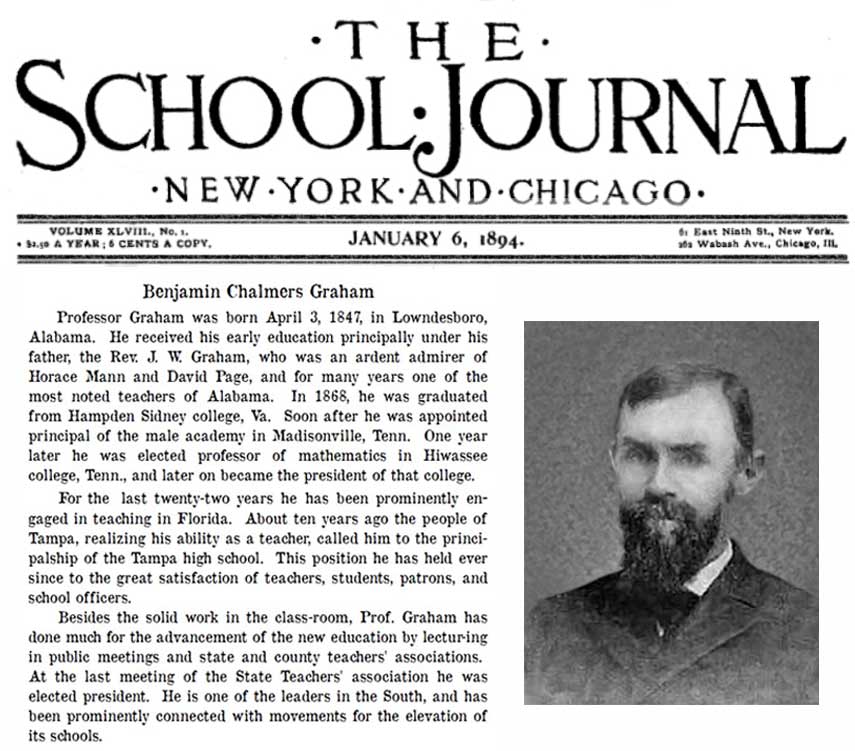 |
Professor Graham was born April
3, 1847, in Lowndesboro,
Alabama. He received his early
education principally under his
father, the Rev. J. W. Graham,
who was an ardent admirer of
Horace Mann and David Page, and
for many years one of the most
noted teachers of Alabama. In
1868, he was graduated from
Hampden Sidney college, Va. Soon
after
[1869?]
he was appointed principal of
the male academy in
Madisonville, Tenn. One year
later
[1870?]
he was elected professor of
mathematics in Hiwassee college,
Tenn., and later on
[1871?]
became the president of that
college.
For the last twenty-two years
[since 1872?]
he has been prominently engaged
in teaching in Florida. About
ten years ago
[1884? No, see footnote]
the people of Tampa, realizing
his ability as a teacher, called
him to the principalship of the
Tampa high school.*
This position he has held ever
since to the great satisfaction
of teachers, students, patrons,
and school officers. Besides the
solid work in the class-room,
Prof. Graham has done much for
the advancement of the new
education by lecturing in public
meetings and state and county
teachers' associations. At the
last meeting of the State
Teachers' association he was
elected president. He is one of
the leaders in the South, and
has been prominently connected
with movements for the elevation
of its schools. |
|
*He became
principal of HCHS in 1894. the
year of this publication. |
B. C. Graham was the 3rd of eleven children
of Rev. J. Whitfield Graham and Sarah
Catherine Smith. Benjamin's wife,
Sally Gates, was a granddaughter of
Josiah Gates, the first white settler in the
Manatee Settlement (Bradenton),
Florida. B.C. was a brother of noted Tampa
judge
William Shelby Graham.
B. C. Graham
Elementary School
|
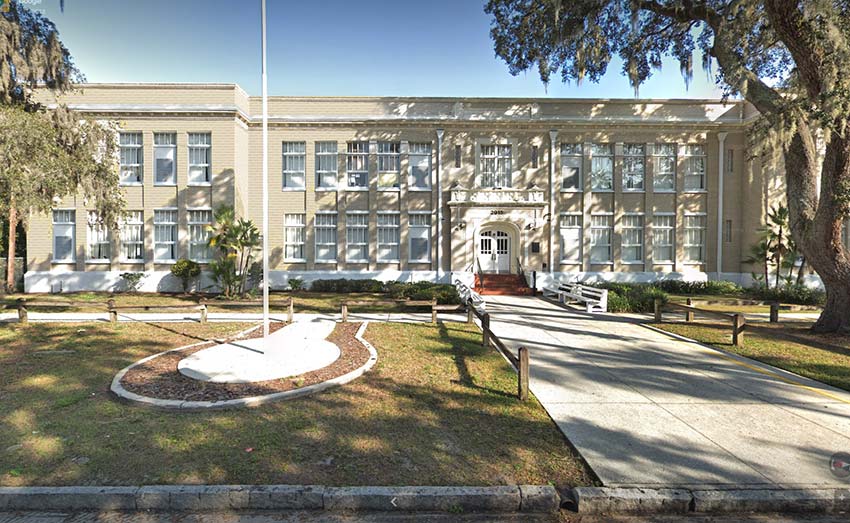
 |
From the
school website:
B.C.
Graham Elementary was built in
1922 on 4 1/2 acres of land
located at the southeast corner
of Massachusetts Avenue and West
Street. The school was named for
Benjamin Chalmers Graham, a
native of Alabama with a degree
from Hampden-Sydney College.
The school's original two-story
building was designed by M. Leo
Elliot and constructed by the
Logan Brothers Construction
Company. It had a cafeteria
added in 1948, and two
additional classrooms in 1952.
In 1987-1988, a 1.4 million
dollar renovation-restoration
included the replacement of
windows, masonry repair, and the
refurbishment of interior
woodwork. This renovation earned
an Award of Excellence for
Historic
Preservation-Restoration. Jan
Abel Kenneth Garcia Partnership,
the architectural firm, and
Burton and Rolley, Inc., the
Engineers, oversaw the
renovation.
Upon opening for the first time
in 1922, B. C. Graham Elementary
saw 193 pupils come through its
doors, to be taught by a total
of eight teachers and the
Principal, Miss Lillian Gwin. By
the end of the first two months,
the enrollment had grown to an
average of 259 students!
Miss Gwin served as Principal of
B. C. Graham Elementary from
1922-1948. Following her as
Principal were Hortense Mintz,
Laura Ellen Weeks, Jean Patrick,
Dr. Whitney, Philip Bondi, James
Pardo, Kathy Coto, Bonnye
Taylor, Mrs. Valenti, Sherry
Orr, and our current Principal,
Sharron Doyle, who has served at
B. C. Graham since 2009.
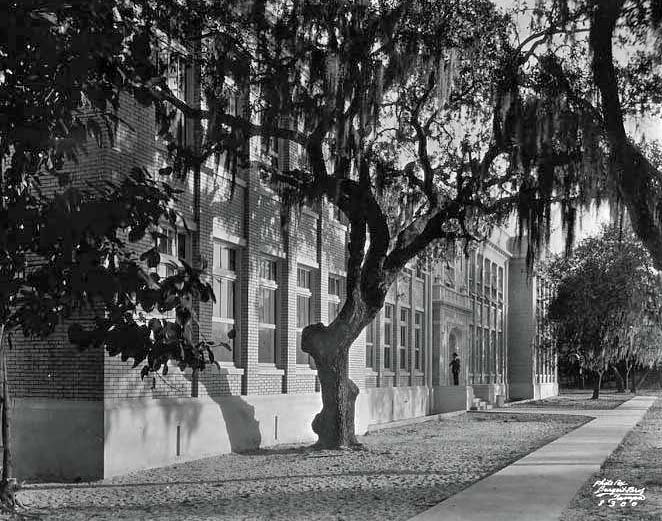
Tree-lined sidewalk at B. C.
Graham School at 2915
Massachusetts Avenue and West
Street, brick front facade, Dec.
16, 1922.
Burgert
Bros. photo
commissioned by M. Leo Elliot,
from the Tampa-Hillsborough Co.
Public Library Coop.
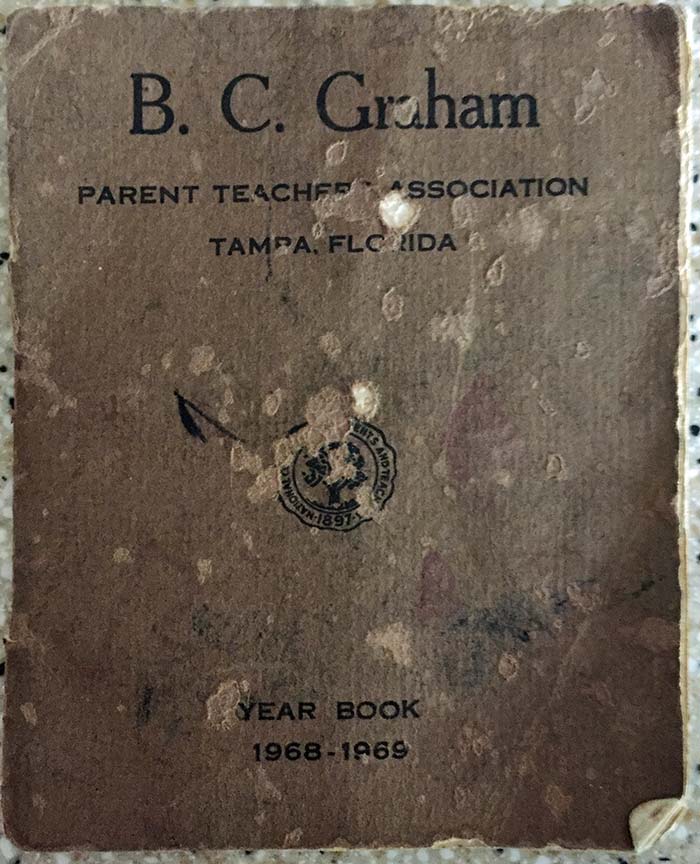
Image courtesy of P. Estrada
|
|
The
Gates family reunion, circa 1900 photo below was
provided by Louis Edwin Gates, Jr., son of Louis
Edwin Gates and Mary Virginia Hefner, to Sally E.
Tait Quinn, granddaughter of Louis Edwin Gates
and Mary V. Hefner Gates, who then provided it
for use here.
A world
of thanks to all the Gates family members who made
this image possible here.
Place
your cursor on the photo to identify family members
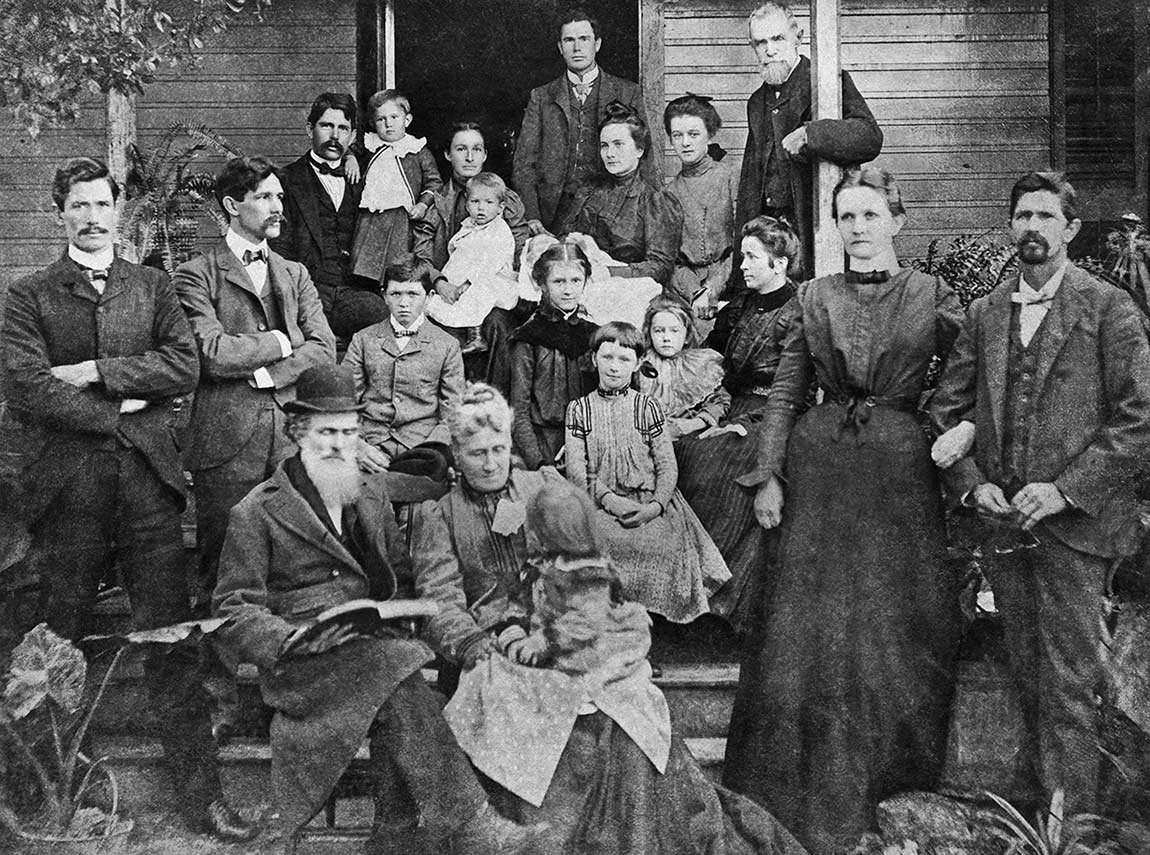
Picture taken in front of Rev. Edward Franklin
Gates' home in Manatee, circa 1900, now East
Bradenton, Florida.
Terms of
relationship in quotes ("Grandma," "Uncle,"
etc.) are what Louis Edwin Gates called them; he
provided the photo and names, and was grandson
of #1 and 2.
Children of Rev. E. F. Gates & Euphemia Hubbard
Gates are in red.
1. Rev. Edward Franklin Gates
"Grandpa" (son of Josiah Gates, first settler in
the Manatee/Bradenton settlement).
2. Euphemia (Feemie) Hubbard Gates
"Grandma".
3.
Samuel Chaires Gates "Uncle
Sammy", son of 1 and 2.
4.
Lula Curry Gates "Aunt Lula", first wife of
3.
5. Roy Gates,
son of 3 and 4
6.
Sally Gates Graham, "Aunt Sally",
daughter of 1 and 2, wife of 7.
7. Benjamin C. Graham,
"Uncle Ben".
8.
Katy Graham (later Dickens), daughter of 6
and 7.
9. Bertha Graham
(later Anderson), daughter of 6 and 7.
10.
Robin Graham (later Sutton), daughter of
6 and 7.
11. Gladys
Graham, never married, daughter of 6 and 7.
12. Annie Laurie Graham,
(later Allgood), daughter of 6 and 7.
13.
Rev. Edward Josiah Gates, "Uncle
Eddie", son of 1 and 2.
14. Esther
Rebecca Wartmann, first wife of 13.
15.
Dr. Hubbard Gates, my papa, son of
1 and 2.
16. Lilla Corbett
Gates, my mama, first wife of 15.
17. Olin Edward Gates, my oldest
brother, son of 15 and 16.
18.
Ralph V. Gates, my second oldest brother,
son of 15 and 16.
19. Laurie Gates, "Uncle
Laurie" (later marr. Pearl) son of 1 and 2.
20. Josiah Olin
Gates (later married
Bertha Alice Stetler), Son of 1 and 2.
21. Chester Gates (infant
obscured, on lap of 14), baby of 13 and 14.
I (Louis Edwin Gates) was born in
1902 and my youngest brother, Kyle was born
~1905.
The information above is the result of slight
modifications (on Oct. 16, 2009) by Louis E.
Gates, Jr. from what his father originally
provided. The photo was provided by Louis
Edwin Gates, Jr., son of Louis Edwin Gates and
Mary Virginia Hefner, to Sally E. Tait Quinn,
granddaughter of Louis Edwin Gates and Mary V.
Hefner Gates, who then provided it for use here.
A
world of thanks to all the Gates family members
who made this image possible here.
B. C. Graham family from Genealogical
Record of the Descendants of Col. Alexander
McAllister, of Cumberland County, N. C ... by David
Smith McAllister |

HILLSBOROUGH COUNTY HIGH
SCHOOL'S FOURTH HOME

Owing to the disastrous freeze of 1895, the plan of Supt.
Buchholz to erect a brick building for the High School had
to be postponed. Accordingly, the school was taught for one
year in the old Baptist Church on the corner of Twiggs and
Tampa Streets.
|
 HILLSBOROUGH
COUNTY HIGH SCHOOL'S FIFTH HOME HILLSBOROUGH
COUNTY HIGH SCHOOL'S FIFTH HOME
THE WRIGHT BUILDING

From 1897 to 1900,
the High School was over the Post-Office, located in the Wright
Block on the corner of Madison Street and Florida Avenue.
It was in this atmosphere that the school newspaper, then called
The Donnybrook Fair, was established and
published, possibly because of their sharing the Times' printing
office. |
|
 HILLSBOROUGH
COUNTY HIGH SCHOOL'S SIXTH HOME HILLSBOROUGH
COUNTY HIGH SCHOOL'S SIXTH HOME

A
new school building was needed but there was no legal way of raising
money for building purposes, except to save it from the general
school fund.
|
|
By careful management after the freeze of 1895, money was saved and
through the special efforts of Supt. Buchholz, the frame building on
the south end of the school property on the corner of Jefferson and
Estelle Streets, our present home, was erected in 1900 at a contract
price of $5,1003
dollars. This well-planned building has two stories and contains an
assembly hall, six large rooms, science laboratories, several small
rooms, a library, an auditorium and an office. It was large enough
to accommodate as many as 250 high school students--ample room for
the number of pupils enrolled at that time.
3The
bid was $6,190
This building housed a real county high school, with a standard
four-year course, which immediately became recognized as a leading
high school of the state.
Mr. J. W. McClung was principal from 1900 to 1907. During the
next two years, 1907 and 1908, Dr. E. M. Hyde was principal.
Then in 1909, Mr. E. L. Robinson was appointed principal.
|
Oct. 21 - School will
start tomorrow, students will be assigned to their
classes. A large number of students were expected.
Principal J. W. McClung will have charge, his first
assistant was Miss Katharine Wicker and will teach
English and History. Mrs. D.B. McKay to teach
Spanish and Science. (Continued at lower left.) |
|
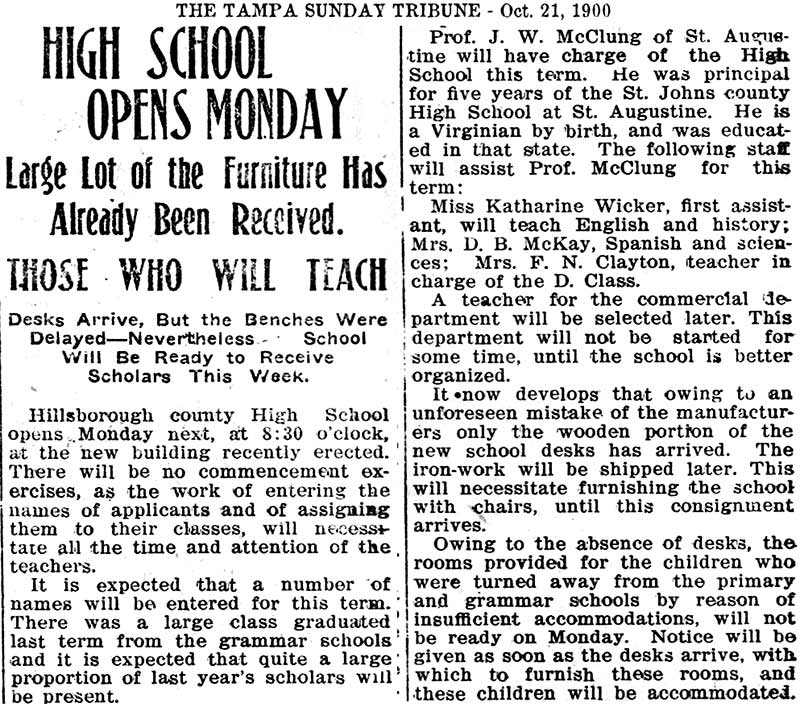 |
|
 In
January 1901, Mr. Buchholz accepted a position in the
Florida State College at Tallahassee. Mr. B.C. Graham,
who up to that time had been principal, succeeded Mr.
Buchholz as County Superintendent. In
January 1901, Mr. Buchholz accepted a position in the
Florida State College at Tallahassee. Mr. B.C. Graham,
who up to that time had been principal, succeeded Mr.
Buchholz as County Superintendent. |
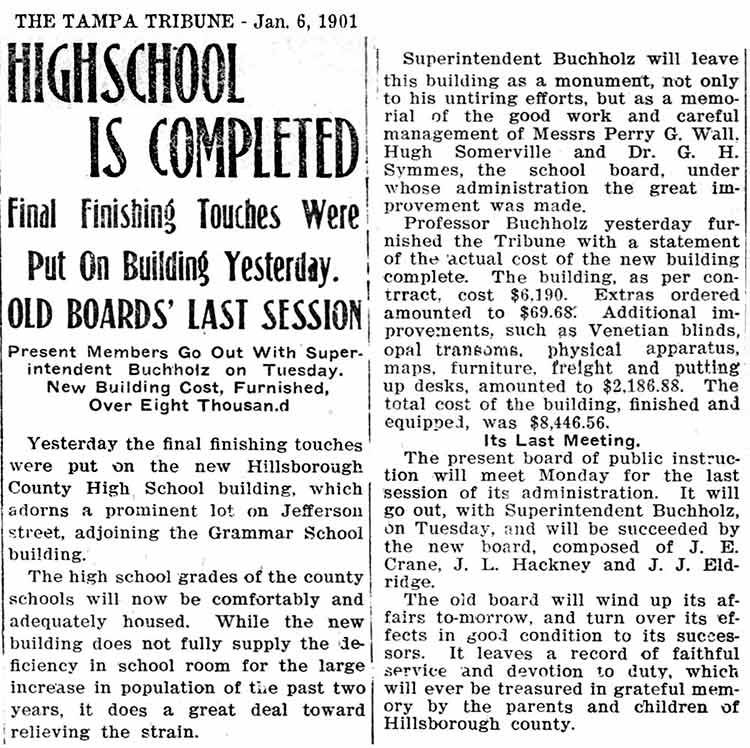 |
|
 which
office he held until 1904, when he was succeeded by Mr. W.B.
Dickenson, who also occupied that position for a term. In 1908, Mr.
Buchholz was again elected as County Superintendent, which place he
holds at the present time. which
office he held until 1904, when he was succeeded by Mr. W.B.
Dickenson, who also occupied that position for a term. In 1908, Mr.
Buchholz was again elected as County Superintendent, which place he
holds at the present time.
|
THE RACE FOR HILLSBOROUGH COUNTY SCHOOL SUPERINTENDENT
|
|
In early Feb., the Tribune announced Tarpon Springs
teacher W. B. Dickenson's candidacy in the primary
election.* Back then, Pinellas County had not
yet been created; Hillsborough encompassed all of
what is now Pinellas.
The Tribune says don't let his youthful appearance
deceive you, "he is a man of much experience and mature
judgment, now 28 years old." He was a teacher for
5 years in Florida public schools, member of the church,
loyal citizen, practical, positive, an able editor, and
rated highly by the editor of the Ocala Banner, a
previous employer.
Then in the next
paragraph, after boosting his maturity, they refer to
him as "a Marion county boy" and "Our young friend..."
*It
may have been a local custom, or maybe one of this
period in history, but elections in Tampa were referred
to as a "Primary," whether it was one to determine which
candidates could run in the final election, or the final
election itself. So this "primary" was the
"primary primary" and the "second primary" to determine
that candidates who would hold the office was to be held
on June 8, 1904. |
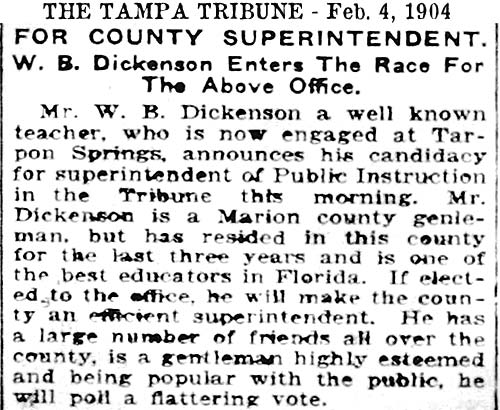 |
|
|
|
|
|
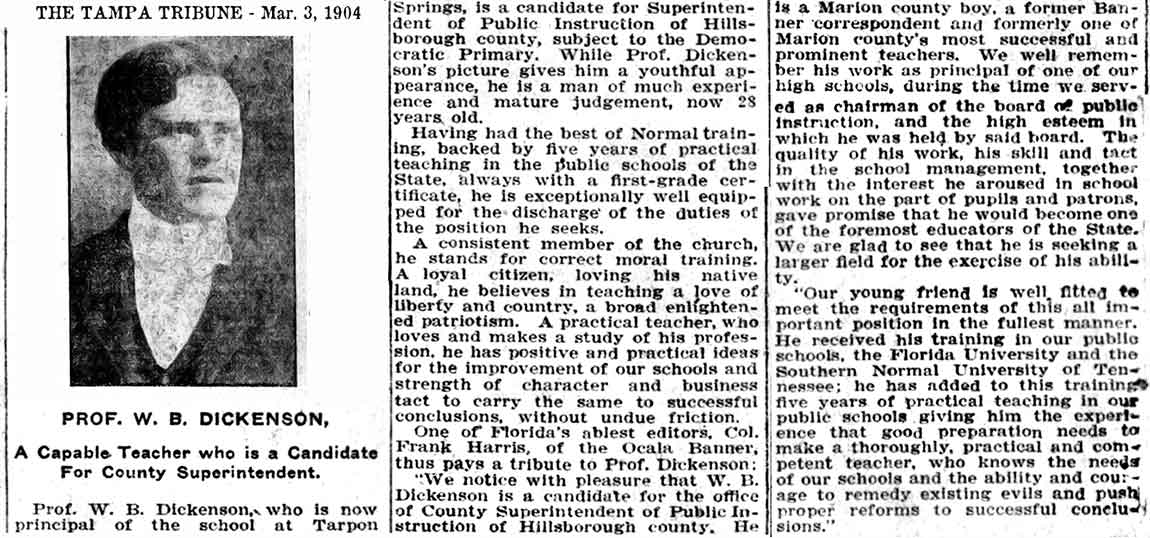 |
|
Five
days later there were 4 candidates running in the
primary, including B. C. Graham.
|
The Tribune is less generous with
space in announcing Graham's candidacy. Graham
is honorable, experienced, and has lots of friends.
If elected, he will continue doing the same thing,
it says. |
|
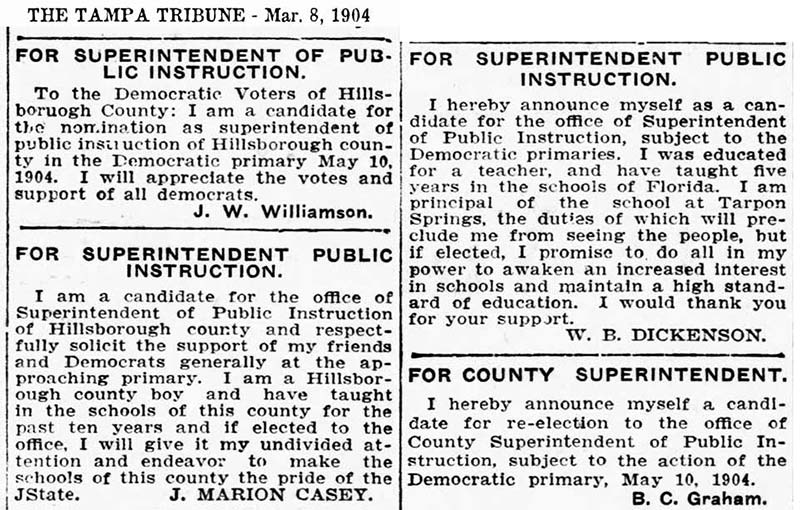 |
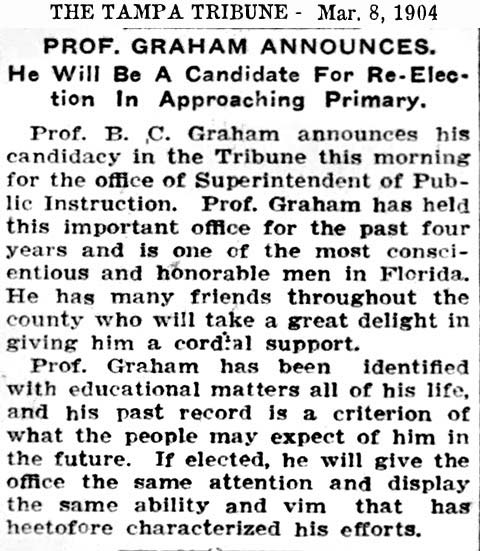 |
|
|
|
|
|
|
|
|
On April 1, John T.
Lowe threw his hat into the ring.
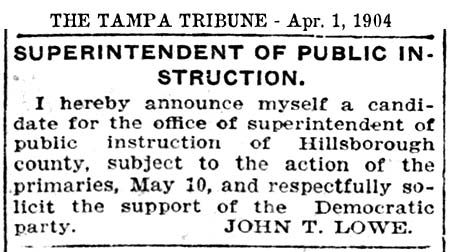 |
On April 10th, the
Tribune published a sample ballot of all positions
in the primary election.
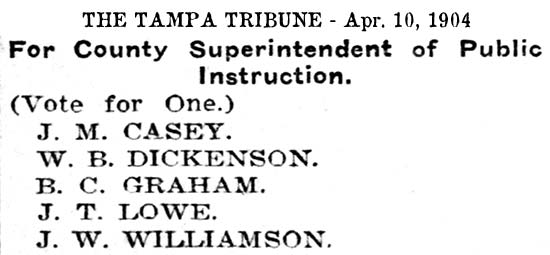 |
|
|
|
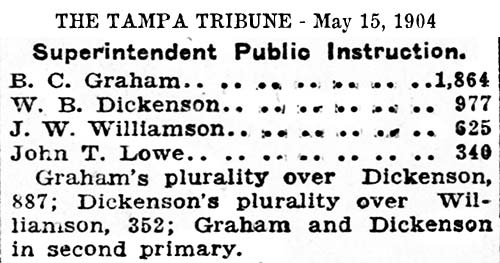 The
primary election was held on May 10th, with the
first few days of returns being updated with
individual precincts vote counts, which
continued to slowly climb. The
primary election was held on May 10th, with the
first few days of returns being updated with
individual precincts vote counts, which
continued to slowly climb.
On May
15, the final count was published as totals for each
position from all the precincts.
Graham
soundly defeated Dickenson by 887 votes, but was
just shy of having the 51% majority over all
candidates. Out of 3,806 votes, Graham's 1,864
represented 49% of all votes. |
|
|
|
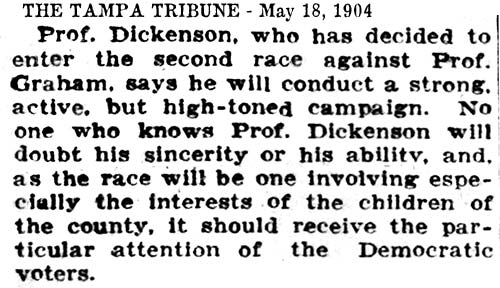 May 18, 1904
May 18, 1904
The Tribune reported that Dickenson will enter
the second race [the final election, which it
also refers to later as a "primary."] and will
conduct a "strong, active, but high-toned
campaign."
This turned out to be an understatement, as
Dickenson launched an all out newspaper blitz on
Graham, but did keep it "high-tone" with no
mud-slinging. |
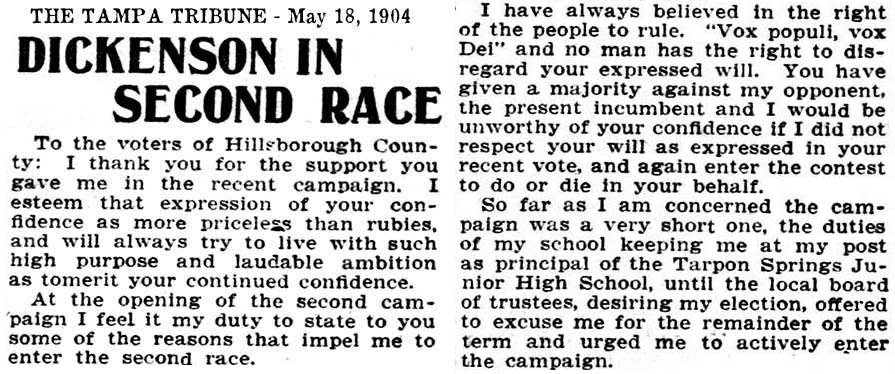 May
18, 1904 May
18, 1904
The Tribune carried this article in which
Dickenson thanks the voters who supported him in
the primary.
He gives his
philosophy on the right of the people to rule
through their vote, and that the majority of
voters were against his opponent.
Apparently,
Dickenson viewed Graham as his only opponent,
and considered the percentage of votes NOT
for Graham as a majority who wanted to
oust Graham.
He also stated
that his campaign for this primary was a short
one, because as principal of the Tarpon Springs
Jr. High school, he was unable to campaign until
the school board of trustees offered to excuse
him from his duties and devote full time to the
campaign.
This is only
the beginning of the article. In the rest
of the article, he gives his reasons for running
for school superintendent. He says that in
this second campaign he will discuss the
economic issues and the performance of the
current administration for the past 3 years.
When elected officials want your vote, you are
entitled to know how they've conducted the
office they've been entrusted to. Whether
they did "all things necessary to advance your
interests and only those things of which you
would approve, or have they permitted ulterior
or sinister motives to influence their action
and failed to so discharge the duties of their
office..." He assures there will be "no
mud-slinging."
See the rest of
the above article, as well as the media blitz
and unrelenting attacks Dickenson launched
against Graham in the Tampa Tribune for the next
month. In the June 2nd Tribune, Dickenson
bought a FULL PAGE of the Tribune, with
"advertisement" in the smallest possible type
under a giant headline "PROF. W. B. DICKENSON'S
CANDIDACY." This ad consisted of 6 very
long, separate articles, most of which had
already appeared in previous issues individually
at one time or another. Two of the
articles in the ad were by J. W. Williamson, who
had run for the school supt. office in the
primary.
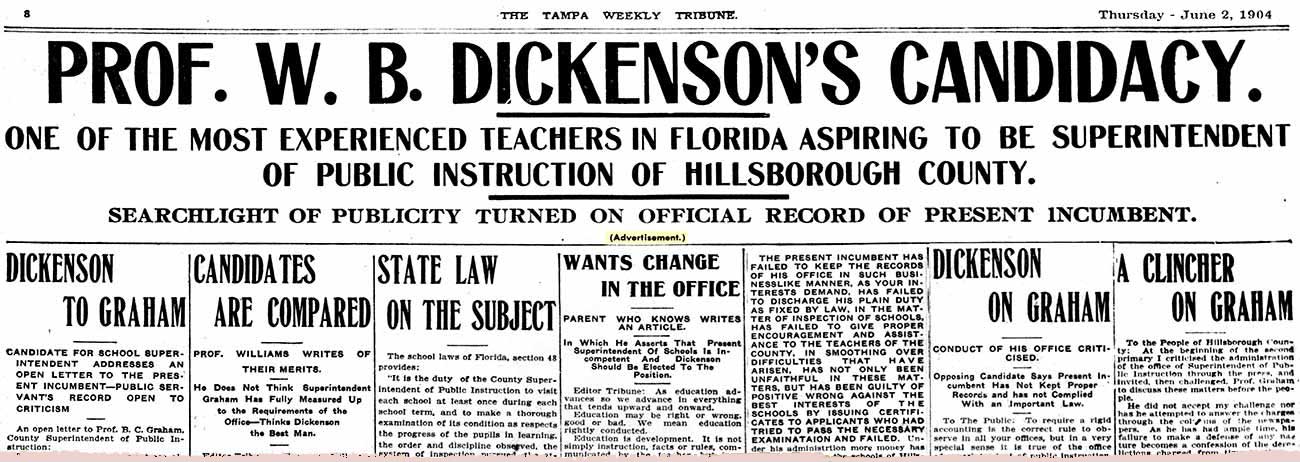 |
|
BACK TO THE 6TH
LOCATION OF HILLSBOROUGH COUNTY HIGH SCHOOL "THE NEED FOR A NEW
BUILDING"
THE 7TH and 8TH HOME OF HILLSBOROUGH HIGH SCHOOL
|